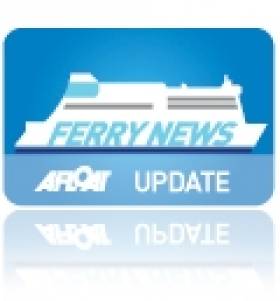Displaying items by tag: GreencastleMagilligan ferry
Foyle Ferry Returns to Service
#FERRY NEWS – After a gap of six months the Greencastle-Magilligan ferry service across Lough Foyle reopened over the St. Patrick's weekend, writes Jehan Ashmore.
The return of the 10-minute cross border route, which offers an alternative to a road journey of nearly 80kms /50 miles was announced by Donegal County Council and Limavady Borough Council.
As previously reported on Afloat.ie, the route operated by Lough Foyle Ferry Company is a joint initiative of the two councils and for the remainder of this month the service will be running to a weekend-only schedule.
Sailings however are to increase to a regular daily service, subject to weather conditions, between 1st April-30th September.
For more information visit www.loughfoyleferry.com
Donegal-Derry Ferry Route Closes
According to the Lough Foyle Ferry Company website, the directors sincerely hope that the suspension of the service will be temporary and look forward to re-commencing operations in early 2012.
The 10-minute crossing served by the 300-passenger / 44-vehicle capacity Foyle Venture (photo) provided year-round sailings. During the summer months the schedule was increased to a continuous shuttle-service as it provided a convenient short-cut for Northerners heading to Donegal.
Motorists could save nearly 80 kms (50 miles) by travelling across the Inishowen Peninsula instead of having to drive through London/Derry. In its third year of operations, the company carried its one-millionth passenger and since then the route has exceeded 2m passegers.

























































